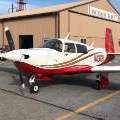When do you cruise faster? Summer/Winter?
-
Members Online
- DrTimcat
- haymak3r
- Scottknoll
- Peter T
- Oscar Avalle
- ta2too
- Schrock Aircraft
- Danb
- Bolter
- TreetopMooney
- Joe Linnebur
- Elan802
- Jarerh
- Slick Nick
- Logwes21
- Martin S.
- Fly Boomer
- Doug G
- TheAv8r
- EarthboundMisfit
- TangoTango
- 7.Mooney.Driver.0
- NickG
- Marc_B
- DanM20C
- exM20K
- MikeOH
- Crawfish
- Ranger_Pete
- Jedei120
- FoxMike
- Sinisa
- flewmanchu
- Robert C.
- GoDemonDeacons
- VetRepp
- GMBrown
- TCC
- jeremyc209
- jetdriven
- AH-1 Cobra Pilot
- mooney_flyer
- theshick
- cbarry
- StevenL757
- buddy
- Sgb318
- Geoff
- N201MKTurbo
- Jackk


Recommended Posts